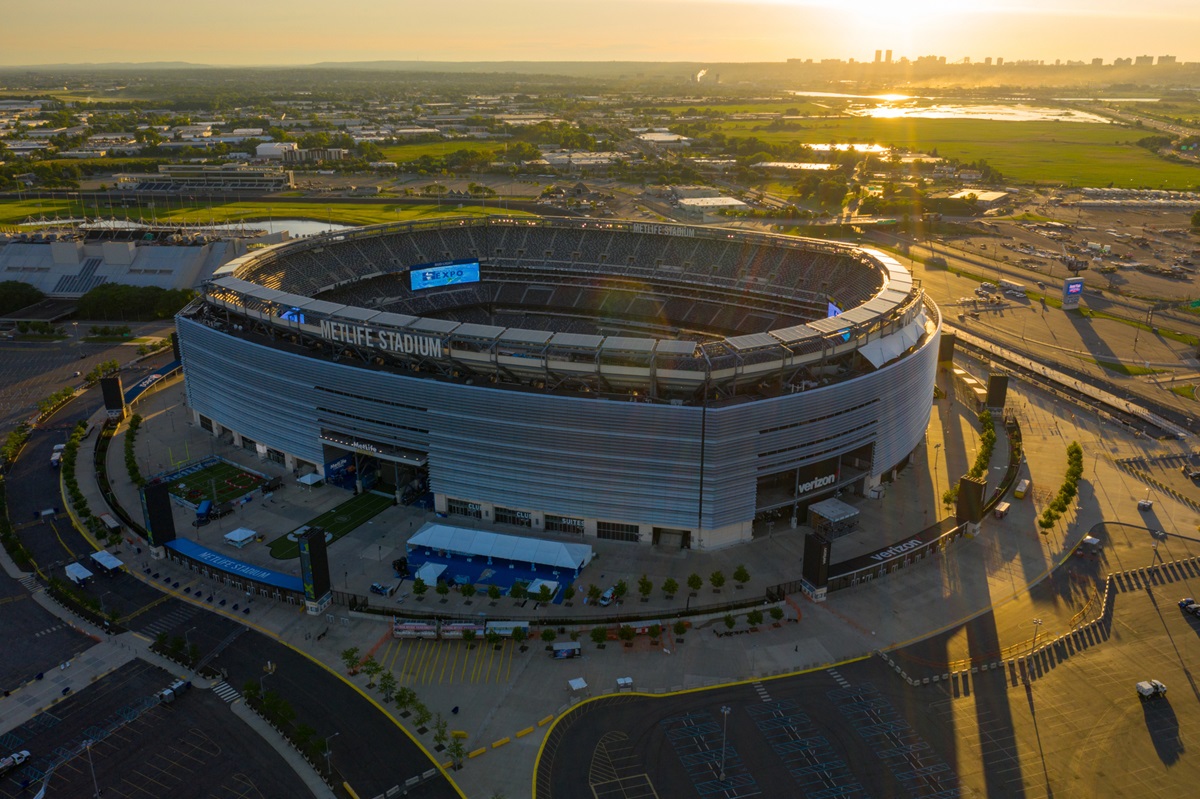By Miguel Gomez and Orrin Benn
The 2026 FIFA World Cup, co‑hosted by the United States, Mexico, and Canada, remains set to feature 48 teams, 104 matches, and 16 host cities. First announced in 2018, the North American collaboration has kept its promise. However, by summer 2025 there’s a clear shift: international fans are increasingly favoring Mexico and Canada. Rising U.S. travel restrictions under President Trump’s second term have fueled concerns over border scrutiny and visa costs—tempering interest in traveling to U.S. host cities, even though the U.S. will still stage 78 matches, including the final.
Mexico and Canada, hosting 13 matches each, are emerging as more welcoming destinations. In Mexico, games will take place in Mexico City (Estadio Azteca), Guadalajara (Estadio Akron), and Monterrey (Estadio BBVA). Canada’s matches will unfold in Toronto (BMO Field) and Vancouver (BC Place). Their accessible entry policies, vibrant soccer cultures, and inclusive atmospheres contrast sharply with the U.S.’s challenges, making them the preferred choices for global fans.
Tourism Booms in Mexico and Canada as U.S. Travel Suffers Under Trump
The contrast in tourism prospects is stark. U.S. inbound travel is projected to decline by around 5.5% in 2025, reversing earlier forecasts of growth, with losses of up to US $18 billion in visitor spending. Major declines are reported from Canada and Europe. Canadian flight bookings to the U.S. plunged 71–76% in March 2025, while car border crossings dropped 23%, indicating a growing retail and tourism revenue loss of about CAD 3 billion.
Meanwhile, Mexico projects a 30% surge in arrivals during the tournament, and Guadalajara anticipates $500 million in local revenue. Canada forecasts 700,000 international visitors and up to $850 million in related tourism income, with Vancouver expecting 60% higher hotel occupancy and Toronto partnering with Indigenous groups to offer enriching cultural programming and sustainability initiatives.

Photo: Depositphotos.com
Related content: Toronto’s Bold Plan to Host FIFA World Cup 2026: Opportunities and Challenges
Mexico: A Soccer Sanctuary with Open Doors
Mexico City (Estadio Azteca), Guadalajara (Estadio Akron), and Monterrey (Estadio BBVA) will host a total of 13 matches. Estadio Azteca is undergoing a major renovation—capacity increasing to 90,000, LED screens and structural upgrades—scheduled to reopen March 28, 2026 ahead of the tournament.

The Azteca will host five of the 13 matches Mexico will play in the World Cup, Photo: Depositphotos.com
Mexico’s visa policies are a stark contrast to the U.S. Over 60 countries, including most of Europe and Latin America, enjoy visa-free entry for up to 180 days. Others can obtain an affordable Electronic Authorization ($20–$40). The Mexican Tourism Ministry plans to introduce “fan visas” by mid-2025 to streamline World Cup travel. Accommodations average $80–$150 per night, compared to $200–$400 in U.S. cities, and enhanced security, including a 10% increase in federal police, ensures safety.
Visa Policies and Cost
Mexico continues to maintain visa-free access for over 60 countries, with others qualifying for affordable e‑authorization ($20–$40). The government introduced a streamlined “fan visa” system in mid‑2025, improving ease of entry. Hotel rates average $80–$150 per night, significantly lower than comparable U.S. cities.
Cultural and Soccer Passion
Mexican fan zones are designed to celebrate national soccer tradition: mariachi performances, street markets, and local gastronomy. With rich tourist landmarks such as Chichen Itzá and Puerto Vallarta within reach, the country aims to deliver a holistic, festive experience.
Canada: A Safe and Inclusive Haven
Canada’s eTA system remains less burdensome—typically issued within hours for visa‑exempt travelers (~$7 CAD), with processing for other visas around 30–60 days, significantly faster than the U.S. backlog. Canada ranks among the top nations on the Global Peace Index, offering reassurance around safety and predictability.
Toronto’s half-foreign‑born population and Vancouver’s fusion of Indigenous and immigrant communities provide a truly global festival environment. Fan villages will feature multilingual signage, ASL interpretation, international food markets, and partnerships with LGBTQ+ and accessibility groups to ensure inclusivity.

BMO Field will host the Toronto matches. Photo: Depositphotos.com
Sustainability and Infrastructure
Vancouver is on track with a $200 million SkyTrain expansion, while Canada is investing about $500 million in tournament-related infrastructure. Both host cities aim for a carbon‑neutral World Cup, appealing to environmentally conscious travelers.
Multicultural Appeal
Toronto’s 50% foreign-born population and Vancouver’s blend of Indigenous and immigrant communities create a truly global festival atmosphere. From Afro-Caribbean celebrations in Toronto to the fusion of Asian and First Nations traditions in Vancouver, both cities are set to be cultural hubs during the World Cup. Language support centers, multilingual signage, and inclusive fan programming are being implemented to ensure no visitor feels like an outsider.
Canada’s commitment to sustainability adds a modern edge. Vancouver’s $200 million SkyTrain upgrade and the federal government’s $500 million infrastructure investment will support eco-friendly transit. Both cities aim to deliver a carbon-neutral tournament, aligning with FIFA’s environmental goals and attracting climate-conscious fans.
Moreover, Canada Soccer is partnering with LGBTQ+ organizations, refugee groups, and accessibility advocates to ensure every type of fan feels welcome. Events like the “World Fan Village” in Toronto will host nightly entertainment, pop-up international food markets, and live match screenings with ASL interpretation.

Photo: Depositphotos.com
Fan Sentiment: Where Welcome Matters
Reports from global supporters emphasize Canada’s diverse, safe cities and Mexico’s intoxicating soccer energy, while frequently criticizing the U.S. for what they describe as “visa nightmares”, expensive fees, and hostile border policies.
Mexico and Canada Take the Lead
Under current conditions, Mexico and Canada emerge as preferred destinations for World Cup travel. With favorable entry policies, cultural richness, affordability, and proactive fan engagement, they outshine the U.S., which confronts increasing logistical and reputational headwinds with restrictive entry, rising visa and ESTA fees—including a new $250 visa integrity fee for many non‑Visa‑Waiver travelers—and a shrinking tourism industry. For fans seeking a seamless, joyful World Cup experience, the heart of 2026 beats strongest north and south of the U.S. border.







